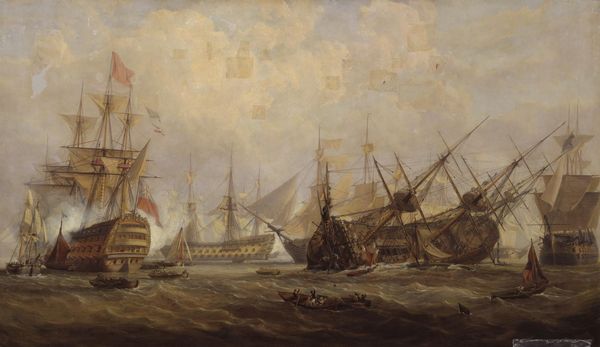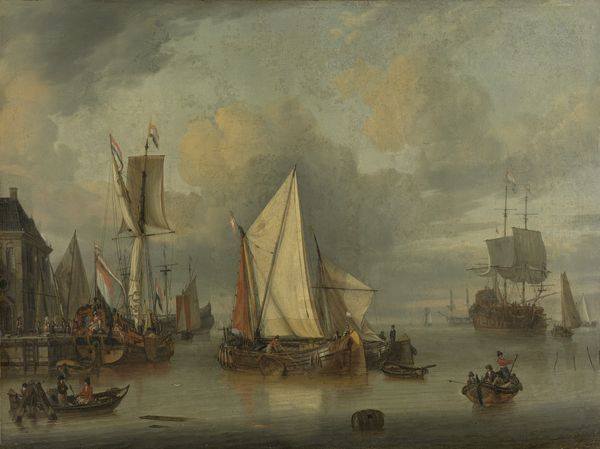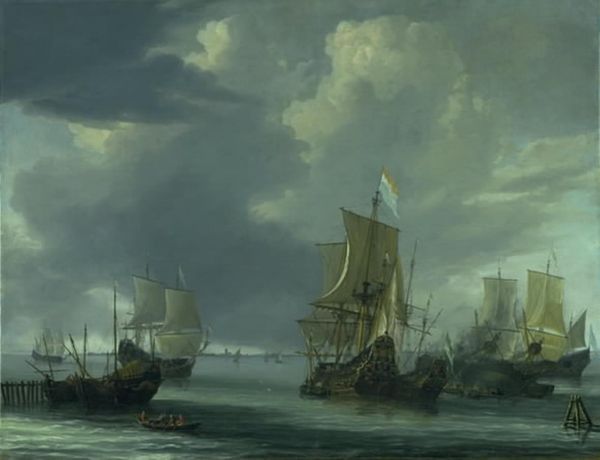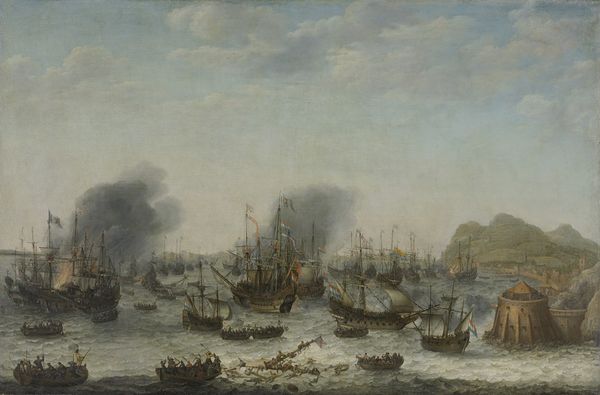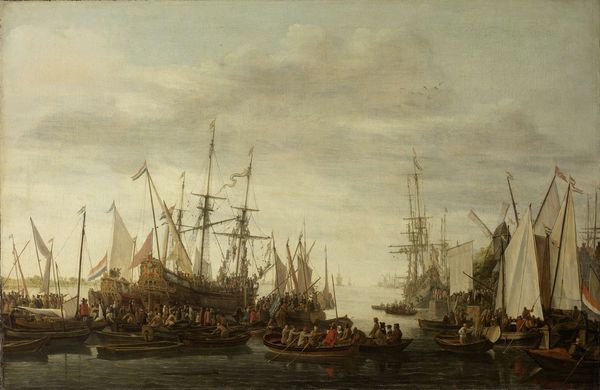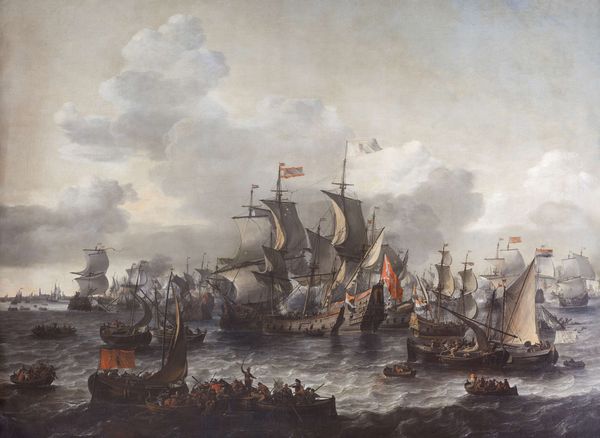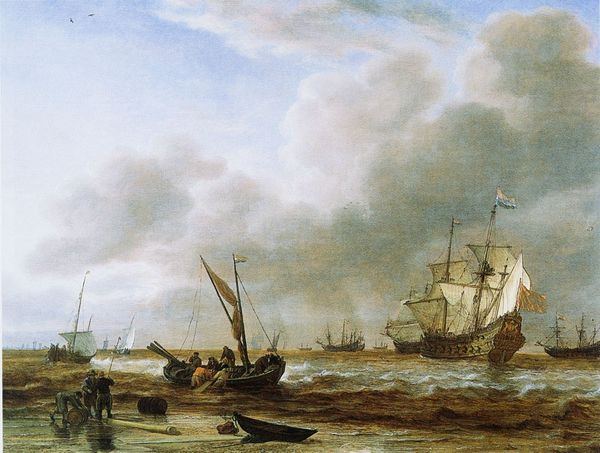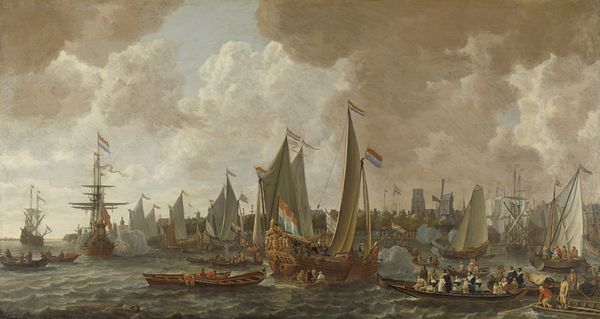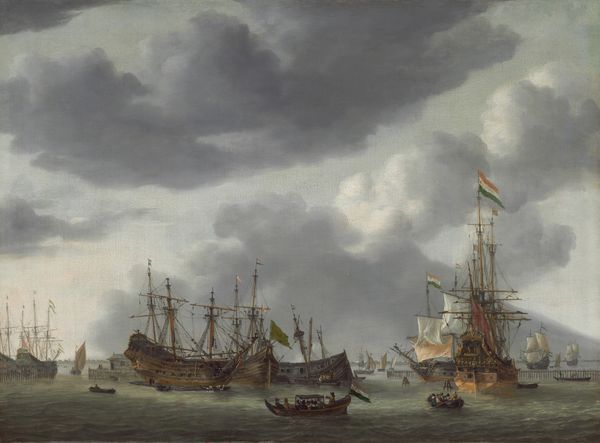
painting, oil-paint
#
baroque
#
dutch-golden-age
#
painting
#
oil-paint
#
landscape
#
cityscape
#
genre-painting
Dimensions: height 77 cm, width 110 cm
Copyright: Rijks Museum: Open Domain
Curator: Abraham Storck's "The Island of Onrust near Batavia (Jakarta)," painted around 1699, offers a glimpse into the Dutch East India Company's maritime activities. Editor: My immediate thought is one of dynamic tension. The turbulent waves contrast sharply with the more serene, solid architecture on the island. The palette emphasizes a controlled dynamism of craft. Curator: Absolutely. Storck, working within the Dutch Golden Age tradition, isn't just painting a pretty picture. He's presenting a portrait of Dutch mercantile power, projecting authority through the control and regulation of sea commerce, manifested in those shipbuilding and repair efforts on Onrust. Editor: I am drawn to the literal mechanics, the nitty-gritty of how a global enterprise is sustained. Look at the meticulous depiction of those vessels—they are shown in all phases, some careening on their side, undergoing repair, their wood scraped clean and likely treated. It draws attention to labor and physical construction. Curator: Precisely. And within this visual record of maritime prowess, consider Batavia itself, a key site for the violent extraction of spices that enabled the very creation of that image, produced with labor and materials that originated throughout the globe. The colonial enterprise at Batavia enforced strict gender roles and hierarchies as a feature of its economic power. Editor: I appreciate that you frame the material achievement as intertwined with such a legacy. Focusing on the construction also illuminates its precariousness. Colonial projects depend on constant maintenance to resist decay, symbolized through those waves and eroding effects of labor, wear, and tear. Curator: The painting reveals a visual economy, the material processes underlying cultural ideology. The flag on the ship, a potent image. This artistic representation solidified specific ideologies tied to gender, commerce, and colonialism. Editor: It strikes me now that Onrust isn’t just an island of activity, but an entire apparatus: a supply chain for the machine of imperial ambition. Understanding it that way encourages discussion around exploitation inherent in maintaining these grand ships in the colonies. Curator: Indeed, it invites critical analysis of art's entanglement with colonial history, its capacity to not only reflect but also legitimize socio-political arrangements that privilege some while exploiting many others. Editor: Well, Storck's visual record here provided not just an artifact but also a mirror for reflecting our continued implication with its materials, past and present.
Comments
No comments
Be the first to comment and join the conversation on the ultimate creative platform.

